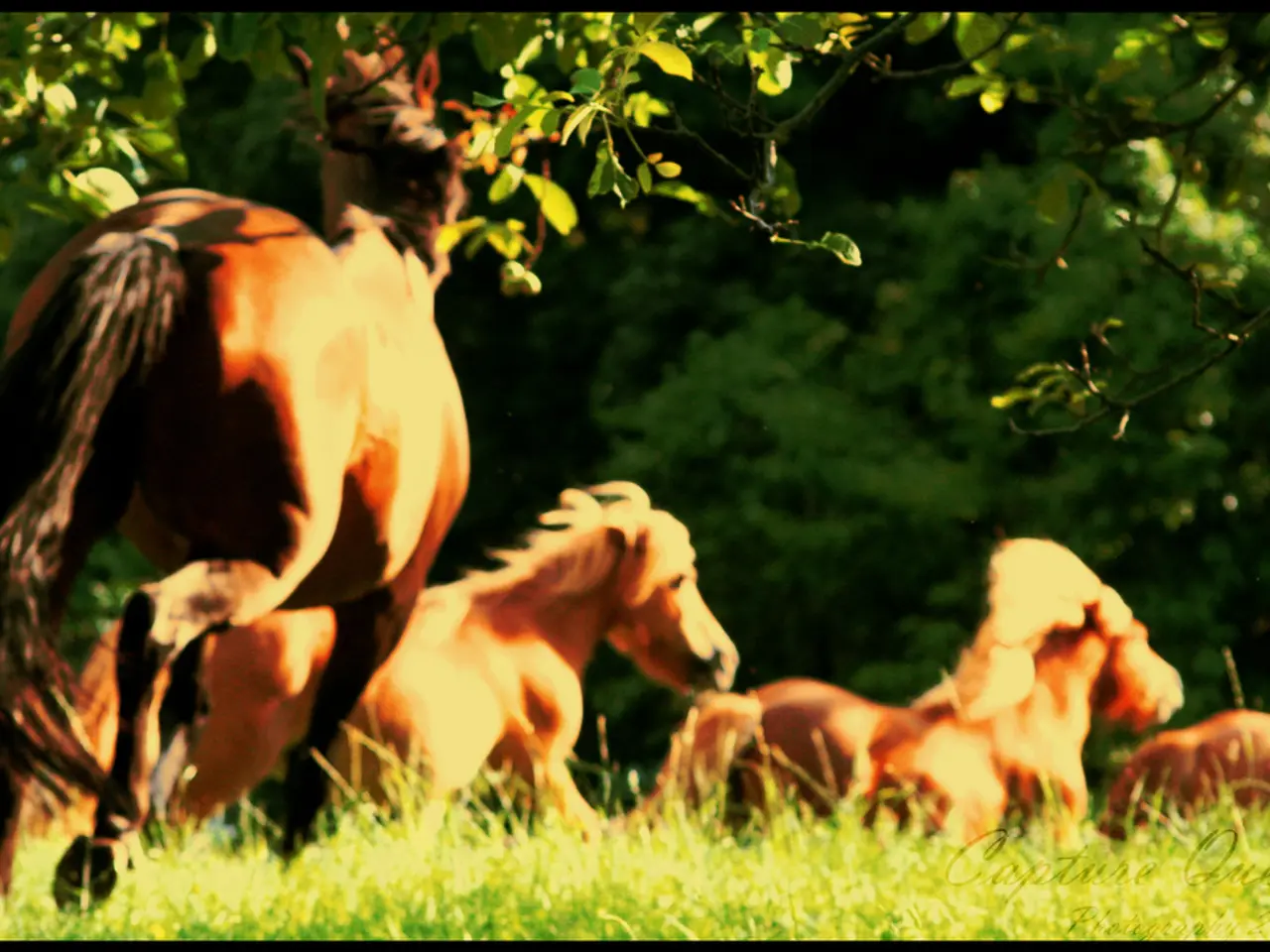Outbreaks of Equestrian Herpesvirus-1 at Racing Tracks: Essential Information You Need
In recent times, outbreaks of Equine Herpesvirus-1 (EHV-1) have been reported at various racetracks, including Keeneland and Turfway Park in Kentucky, the Fair Grounds Race Course in Louisiana, and the New Orleans racetrack. This virus, which can cause potentially serious diseases in horses, has raised concerns among horse owners and veterinarians alike.
EHV-1 presents with a range of symptoms, including fever, nasal discharge, coughing, and neurological signs such as ataxia (loss of coordination). In some cases, it may lead to abortion in pregnant mares. Respiratory symptoms may include a fever of 102°F or greater, nasal discharge, swelling of the lymph nodes, and the area around the throatlatch. Neurologic symptoms, when present, will peak within 24 to 48 hours after their initial onset and may include lethargy, urine dribbling, head tilt, incoordination or loss of balance, especially in the hind end, or inability to rise.
The outbreak at the New Orleans racetrack, for instance, affected the 2016 Kentucky Derby third-place finisher, Gun Runner, whose $12 million Pegasus World Cup entry was canceled due to not being cleared for transport in time. The backside of the Fair Grounds Race Course has been quarantined, and no horses can be transported in or shipped out due to the outbreak.
To protect horses from possibly infected animals, strict hygiene measures should be followed. This includes isolating sick horses, minimizing horse-to-horse contact, and thorough disinfection of equipment and stalls. Vaccination can also reduce the risk but may not fully prevent infection. However, Dr. Robertson, a veterinarian from Bannon Woods Veterinary Clinic in Louisville, is recommending vaccination for horses with increased risk.
It's crucial to avoid sharing buckets, feed tubs, grooming supplies, equipment, etc. from horse to horse in your barn. Vermin control (rodents, birds, and insects) is also critical as they can carry diseases in and out of your barn.
Any new horses to the property should be checked by a vet before arrival and observed while isolated from the resident horses for at least 30 days. It's important to know your horse's normal vitals: temperature, heart rate, and respiratory rate; learn what is normal for your horse and what isn't.
Establishing a specific plan with your vet in case there is a contagious outbreak on your property is also advisable. Practicing biosecurity every day will greatly decrease the chances of illness during outbreaks. For more information, check out "Biosecurity for Horse Owners" by Alicia Skelding of Equine Guelph.
It is important to talk to your own veterinarian to see which of the options available are best for you and your horse. Remember, the available respiratory vaccination is known to be of value in limiting the spread of outbreaks of the neurologic form by limiting nasal shedding and dissemination of infection. However, currently, there is not a vaccine labeled for the neurologic form of Herpes.
Lastly, do not use one water source for multiple horses. Wash your hands to keep from getting sick and to help your horse avoid illnesses as well. Dr. Robertson states that horse owners in Northern Kentucky should be on high alert as there are several surrounding barns that adopt and repurpose ex-race horses for new careers such as eventing and dressage. Symptoms for EHV-1 may appear similar to those of influenza, so it's essential to stay vigilant and seek professional advice if you suspect your horse may be infected.
Read also:
- visionary women of WearCheck spearheading technological advancements and catalyzing transformations
- Recognition of Exceptional Patient Care: Top Staff Honored by Medical Center Board
- A continuous command instructing an entity to halts all actions, repeated numerous times.
- Oxidative Stress in Sperm Abnormalities: Impact of Reactive Oxygen Species (ROS) on Sperm Harm








